Introduction
A Chain Feeding System is a highly efficient and automated feed delivery solution designed for modern poultry farms, especially for breeder, broiler, and layer operations. The system uses a durable chain mechanism to transport feed uniformly through feeding lines, ensuring consistent feed distribution to every bird in the house.
Unlike traditional manual feeding or auger-based systems, the chain feeding system is built for accuracy, reliability, and flexibility. It minimizes feed wastage, enhances feed hygiene, and supports precise control of feeding quantity and timing. Whether used in breeder houses, layer cages, or floor-rearing environments, this system plays a vital role in achieving uniform bird growth and better feed conversion efficiency (FCR).
The automated chain feeding system consists of several integrated components: feed hoppers, drive motors, galvanized feed tracks, corner wheels, chain conveyors, and control panels. These components work together to deliver feed continuously and evenly along the entire feeding line.
It is especially suitable for large-scale poultry operations where feed management precision directly affects performance, productivity, and profitability. By adopting a chain feeding system, farmers can significantly reduce manual labor, optimize feeding cycles, and maintain consistent nutritional access across all birds.
Technical Parameters
System Type | Automatic Chain Feeding System |
Application | Broiler Breeders, Layer Breeders, Layer Hens, Parent Stock |
Feed Delivery Speed | 36 – 60 meters per minute (adjustable) |
Feeding Line Length | Customizable, typically 30 – 120 meters |
Drive Motor Power | 0.75 kW – 1.5 kW |
Feed Hopper Capacity | 100 – 200 kg |
Feed Type Supported | Mash, Crumbles, Pellets |
Feeding Cycle | Fully automated via timer or PLC |
Material | Hot-dip galvanized steel, stainless steel chain, UV-resistant plastic pans |
Feed Chain Type | Flat link steel chain with anti-wear coating |
Feed Level Control | Photoelectric or mechanical feed sensor |
Power Supply | 220V/380V, 50Hz/60Hz |
Optional Accessories | Corner drive unit, chain tensioner, feed level sensor, feed silo connection |
Features
1. Uniform Feed Distribution
The system ensures even feed delivery throughout the entire house. The chain movement distributes feed smoothly and consistently, ensuring each bird receives an equal portion without overcrowding or competition.
2. Strong and Durable Design
The feed chain and track are made of high-strength galvanized steel and anti-corrosion materials, designed to endure heavy loads, frequent operation, and the humid poultry house environment.
3. Adjustable Feed Flow Rate
Farmers can easily regulate feed quantity and speed by adjusting the drive motor and chain movement rate. This flexibility helps meet the nutritional requirements of birds at different growth stages.
4. Fully Automated Operation
Through timers or programmable logic controllers (PLCs), feeding can be fully automated. Feed delivery, refilling, and cycle intervals are precisely controlled to ensure optimal timing and minimal waste.
5. Compatibility with Various Poultry Systems
The chain feeding system is compatible with breeder cages, floor systems, layer houses, and rearing systems. It integrates easily with existing silos, drinker lines, and ventilation systems.
6. Low Maintenance Requirements
Due to its robust design, the system requires minimal maintenance. Simple cleaning, lubrication, and tension adjustments are sufficient to keep it running smoothly for years.
7. Reduced Feed Segregation
Unlike auger systems that may crush or separate feed particles, the chain system preserves the quality and uniformity of the feed, ensuring birds consume a balanced diet.
8. Modular and Expandable Structure
The system can be expanded or reconfigured based on future needs. Its modular design allows easy extension of feeding lines or integration with additional silos.
9. Efficient Corner Wheel Design
The high-precision corner wheel unit minimizes friction and ensures smooth feed chain movement, reducing wear and power consumption.
10. Safe and Hygienic Feeding
The enclosed chain track minimizes feed contamination and dust generation, improving overall farm hygiene and biosecurity.
Advantages
1. Increased Feed Efficiency
The chain feeding system ensures accurate feed delivery with minimal waste, leading to better feed conversion ratios (FCR). Every bird receives an equal opportunity to eat, resulting in more uniform flock growth.
2. Reduced Labor Costs
Automation significantly cuts down the need for manual feeding. A single operator can manage several poultry houses, improving labor productivity and reducing operational costs.
3. Enhanced Flock Uniformity
Uniform feed distribution leads to consistent bird weight and better health conditions, directly contributing to higher egg production or growth performance.
4. Long-Term Durability
The chain and track components are designed for heavy-duty performance. The hot-dip galvanized and stainless steel materials resist corrosion and wear, even under long-term use.
5. Precise Control of Feeding Cycles
Farmers can program feeding times to align with flock behavior. This precision improves feed utilization, enhances digestion, and reduces stress among birds.
6. Better Feed Hygiene
Since the feed is transported in a semi-enclosed chain track, contamination risks are minimized. The clean feed line ensures birds receive safe and fresh feed each cycle.
7. Energy Efficiency
The optimized mechanical design and efficient drive motor minimize power consumption, making it an energy-saving feeding solution.
8. Suitable for Large and Small Farms
The system can be scaled to fit various farm sizes—from small breeder houses to large commercial layer complexes—making it an ideal solution for modern poultry operations.
9. Less Feed Damage
The chain gently moves the feed along the track, preventing dust generation and feed crushing, maintaining nutritional value and palatability.
10. Easy Integration with Farm Automation
When connected with feed sensors, silos, and smart farm control systems, the chain feeding system becomes part of a fully integrated, intelligent feeding management solution.
Application Scenarios
1. Breeder Farms
In breeder houses, accurate feed control is essential for maintaining the correct body weight for optimal fertility. The chain feeding system allows precise feeding for both male and female breeders through separate lines.
2. Layer Farms
For laying hens, consistent feeding schedules ensure steady egg production and shell quality. The chain system delivers feed evenly along all cages, improving egg yield and flock uniformity.
3. Broiler Rearing Houses
Uniform feed distribution helps maintain even growth among broilers. The system supports continuous feeding, ensuring balanced nutrition and minimizing aggressive feeding behavior.
4. Parent Stock Farms
High-value parent flocks require controlled feeding to maximize reproductive performance. The chain feeding system ensures reliable delivery and consistent feed quality for these sensitive operations.
5. Floor or Aviary Systems
In open rearing environments, the chain system prevents feed scattering and ensures even access to all birds, maintaining cleanliness and efficiency.
6. Automatic Poultry House Integration
It seamlessly integrates with feed silos, weighing systems, ventilation, and climate control units, forming a complete automatic management system.
Usage Instructions
Step 1: Installation
Install the feed silo or hopper at the starting point of the system.
Connect the chain track around the entire poultry house according to the layout plan.
Set up corner units, tensioners, and feed outlets along the line.
Ensure all components are securely fixed and aligned.
Step 2: Initial Setup
Check the drive motor and power connections.
Adjust chain tension to the manufacturer’s recommended level.
Load the hopper with feed and run a dry test to ensure smooth chain movement.
Step 3: Feeding Operation
Set the feeding schedule via control panel or PLC system.
Start the feeding process; feed is transported evenly through the chain track.
Observe initial operation to confirm uniform distribution.
Adjust feed flow rate if necessary to match bird consumption.
Step 4: Regular Monitoring
Check feed levels in the silo and hopper daily.
Inspect chain tension and track alignment weekly.
Observe bird behavior to confirm proper feeding conditions.
Step 5: Cleaning and Maintenance
Clean feed tracks and corners regularly to prevent blockages.
Lubricate moving parts (motor bearings, chain tensioners) monthly.
Replace worn chain sections or corner wheels when necessary.
Conduct a complete system inspection before introducing a new flock.
Frequently Asked Questions (FAQ)
Q1: What is a Chain Feeding System used for?
It is an automated feed delivery system used in poultry farms to distribute feed evenly and efficiently to all birds, reducing labor and ensuring uniform growth.
Q2: What types of feed can it handle?
The system can handle mash, crumble, or pellet feed, although fine mash is most commonly used for breeders and layers.
Q3: How does it differ from an auger feeding system?
A chain system uses a moving chain within a trough to carry feed, maintaining uniformity and minimizing feed damage. Auger systems can grind or separate feed particles over time.
Q4: Is it suitable for breeder and layer houses?
Yes, the chain feeding system is ideal for both breeder and layer farms, as it provides precise feed control and ensures all birds receive equal feed quantities.
Q5: Can feeding be automated?
Absolutely. The system supports automatic feeding cycles through programmable timers or PLCs, allowing fully unattended operation.
Q6: How often should maintenance be performed?
Routine inspection should be done weekly. Cleaning and lubrication should occur monthly or after every flock to ensure long-term performance.
Q7: How long can a feeding line be?
The line length typically ranges between 30 and 120 meters, but it can be extended with additional drive units or corners depending on farm size.
Q8: What are the main materials used?
The system is built with hot-dip galvanized steel, stainless steel chain, and durable plastic components, ensuring resistance to corrosion and long service life.
Q9: How does the system reduce feed waste?
By delivering feed precisely and evenly, birds eat more calmly and uniformly, preventing feed spillage and selective feeding.
Q10: What is the typical lifespan of a chain feeding system?
With regular maintenance, the system can last 10–15 years or more, depending on environmental conditions and usage intensity.
Conclusion
The Chain Feeding System represents a cornerstone of modern poultry feeding technology. Its combination of automation, durability, and efficiency ensures consistent feed distribution, reduced waste, and improved flock performance.
By eliminating manual feeding errors, maintaining feed quality, and allowing precise feeding control, it provides farmers with a sustainable, cost-effective solution to optimize production. Whether used in breeder, layer, or broiler farms, the chain feeding system helps achieve higher yields, healthier birds, and greater profitability.
In the era of smart poultry farming, investing in an Automatic Chain Feeding System is not just a modernization step—it’s a strategic move toward better management, animal welfare, and long-term success in the global poultry industry.
Company Profile
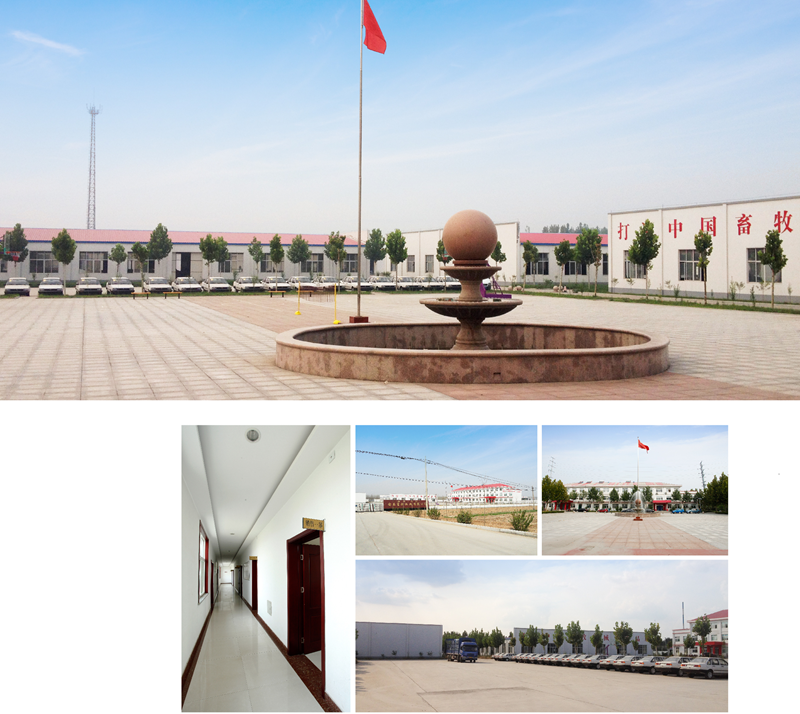
Shandong Huimin Qinle Livestock Machinery Co., Ltd. (formerly Shandong Huimin Qinle Livestock Machinery Factory) is a professional poultry equipment manufacturer with over 20 years of experience. We offer a comprehensive service package, from design (land and chicken coops), production (equipment and prefabricated steel coops), installation, commissioning, customer training, and after-sales service.
Located in Huimin County, Binzhou City, Shandong Province, China, the company has extensive experience in mechanical processing and manufacturing, as well as livestock machinery production and operation. With fixed assets of RMB 15 million, the company employs 160 people, including 30 R&D staff, and occupies a 40,000-square-meter factory. Equipped with over 110 pieces of advanced precision production equipment, including CNC machining centers and laser cutting machines, the company boasts a production capacity of RMB 50 million.
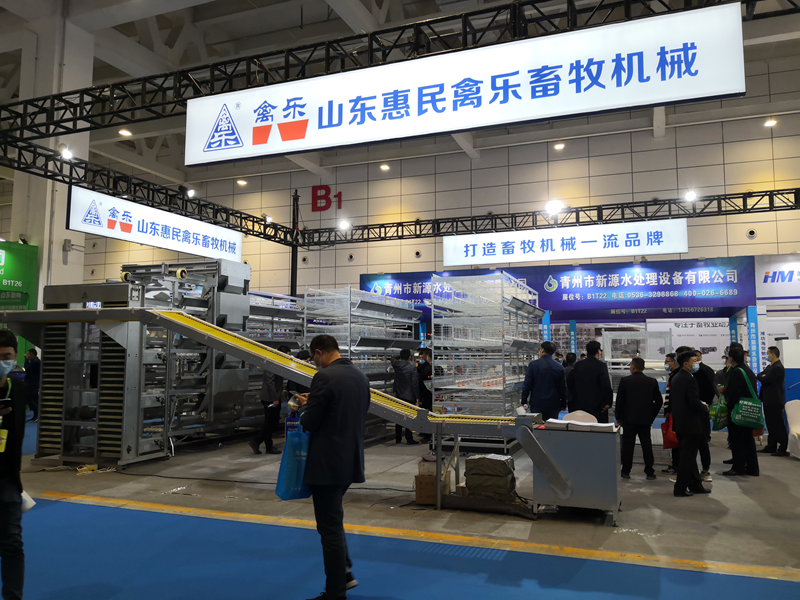


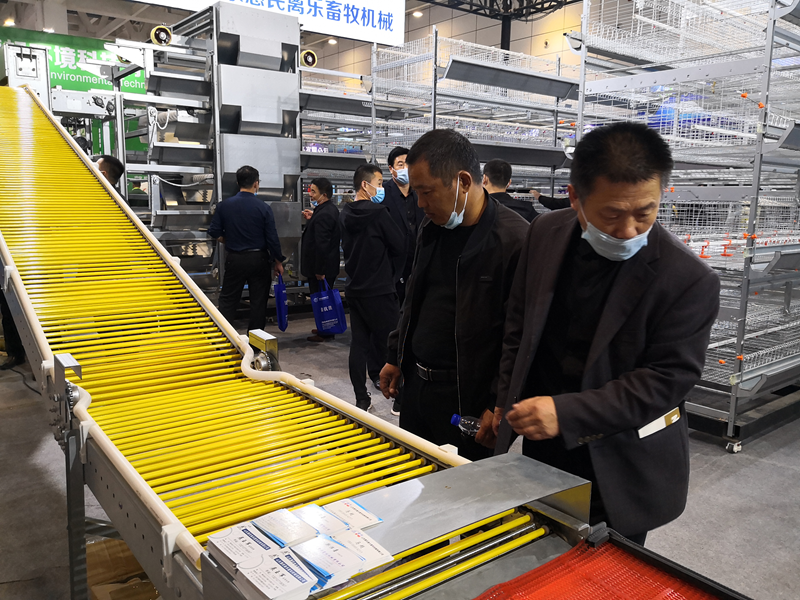
Chicken Farming Equipment Mesh Production Workshop

Machining Workshop

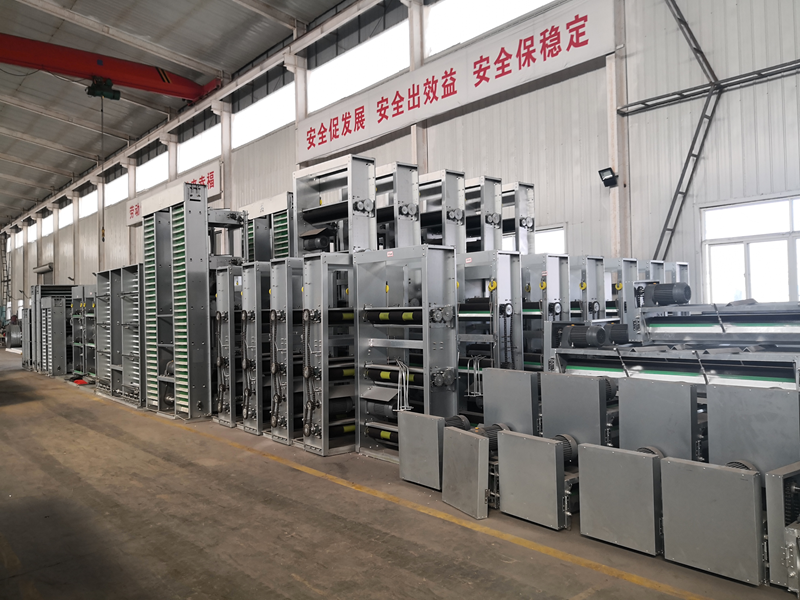
Turret-type CNC Punch Press, Laser Cutting and Other Machining Equipment



Fully Automated Roll Forming Production Line

Hot-dip Galvanizing Production Line

Electroplating Production Line

Environmental Protection Equipment

Chicken Farming Equipment Product Series
Egg-laying Hen Farming Equipment
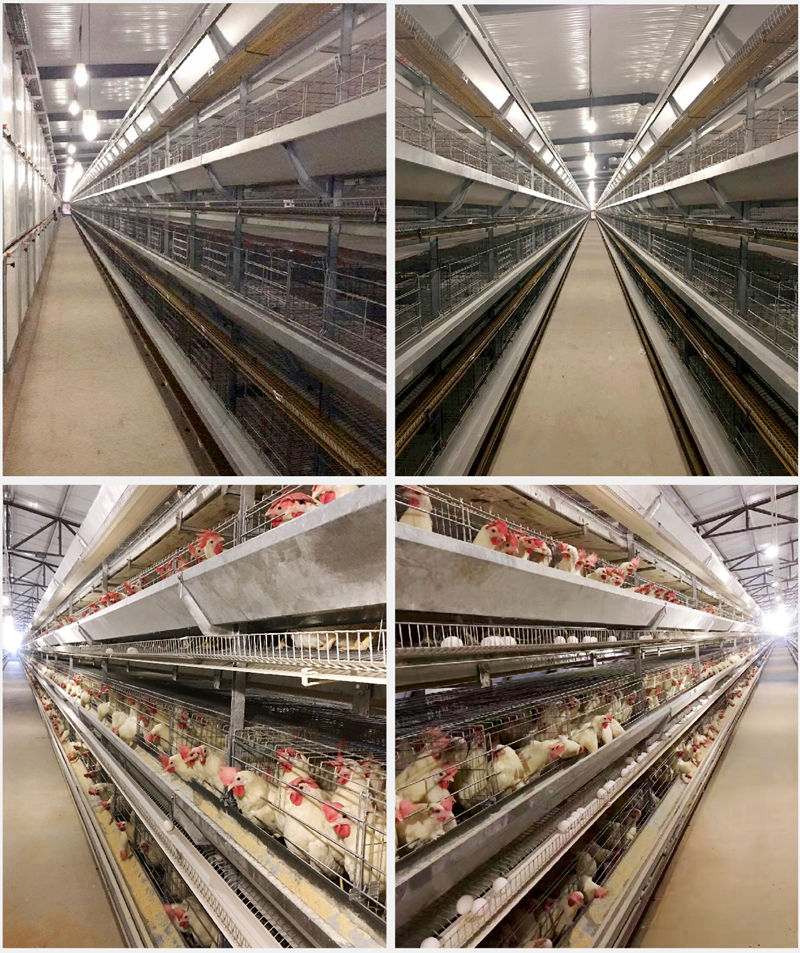
Stacked Brooding Cage Equipment

Stacked Broiler Cage Equipment
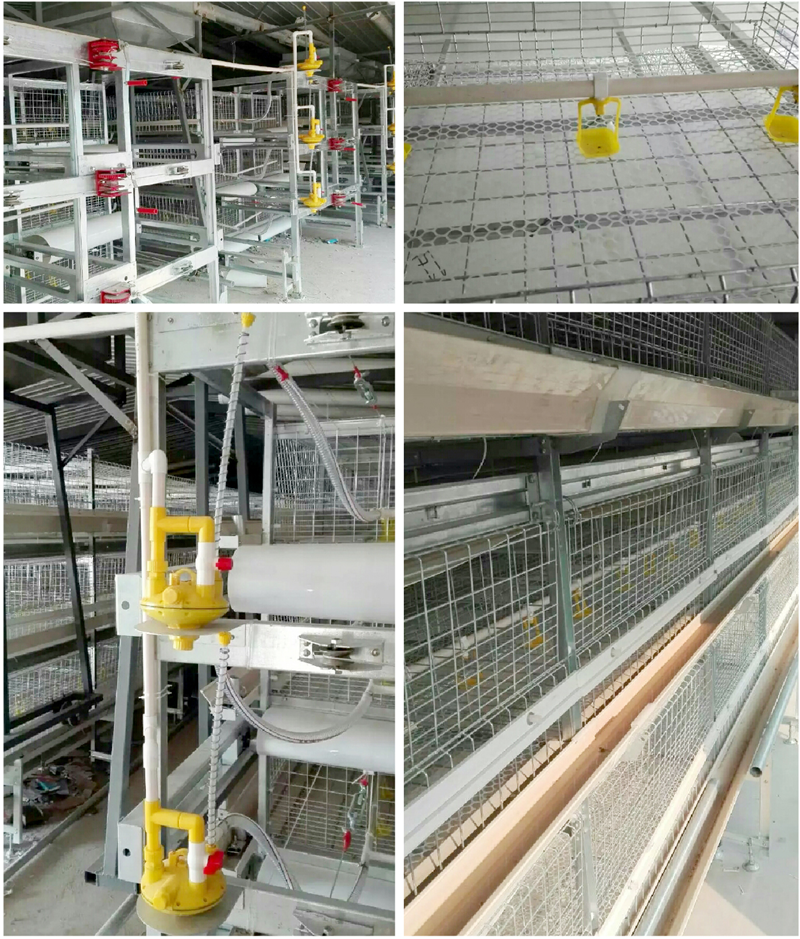
Stepped Layer Hen Cage Rearing Equipment
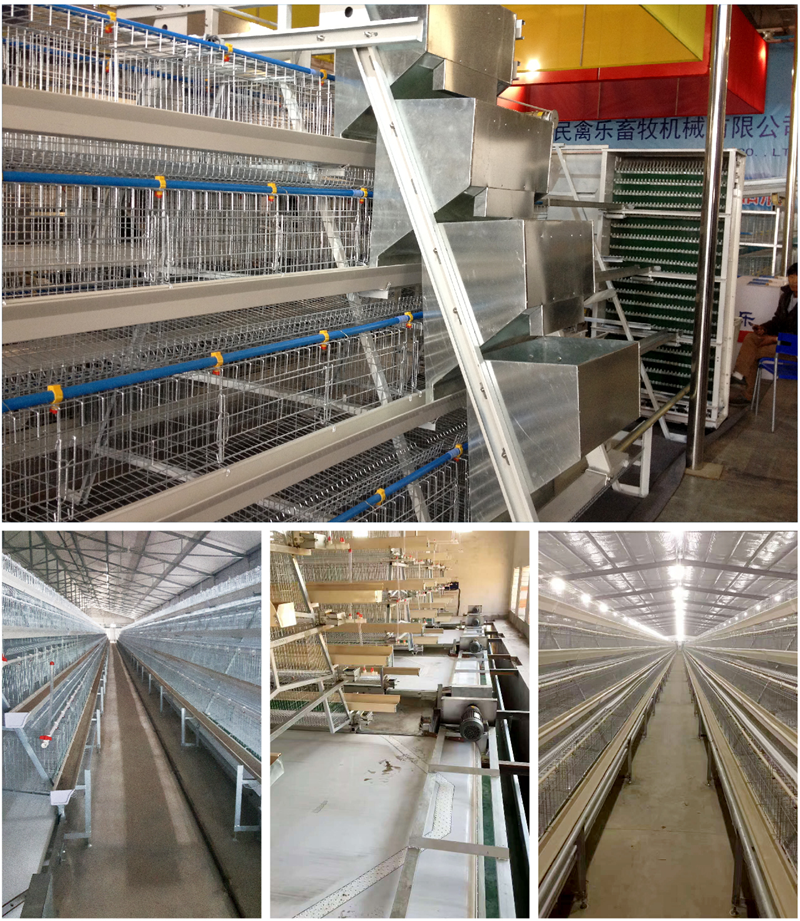
Automatic Egg Collection System

H-type Cage Feeding Machine
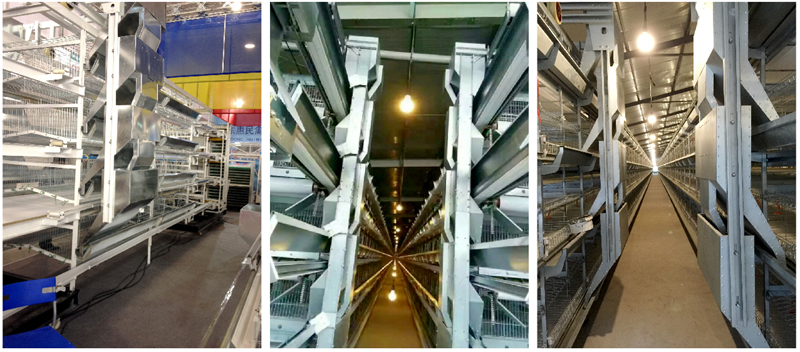
Stepped Cage Straddle Feeder
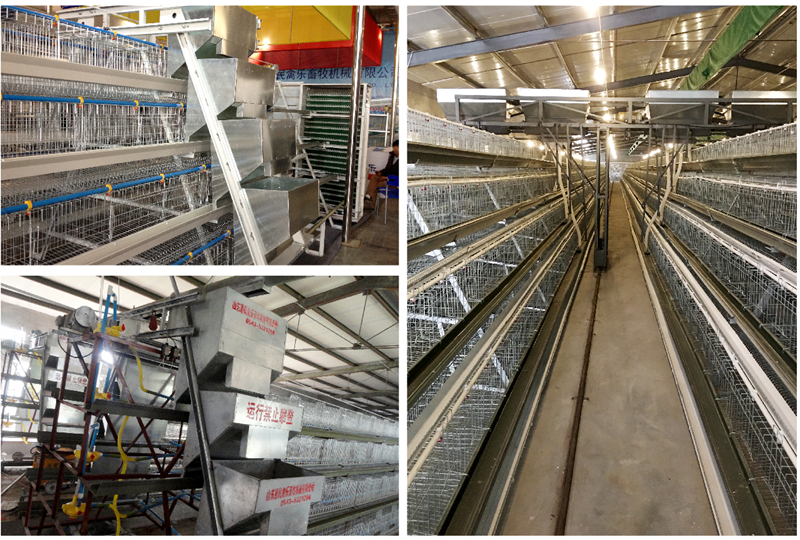
Manure Removal Machine

Fans, Heated Curtains, Environmental Control Systems, and Lighting Equipment
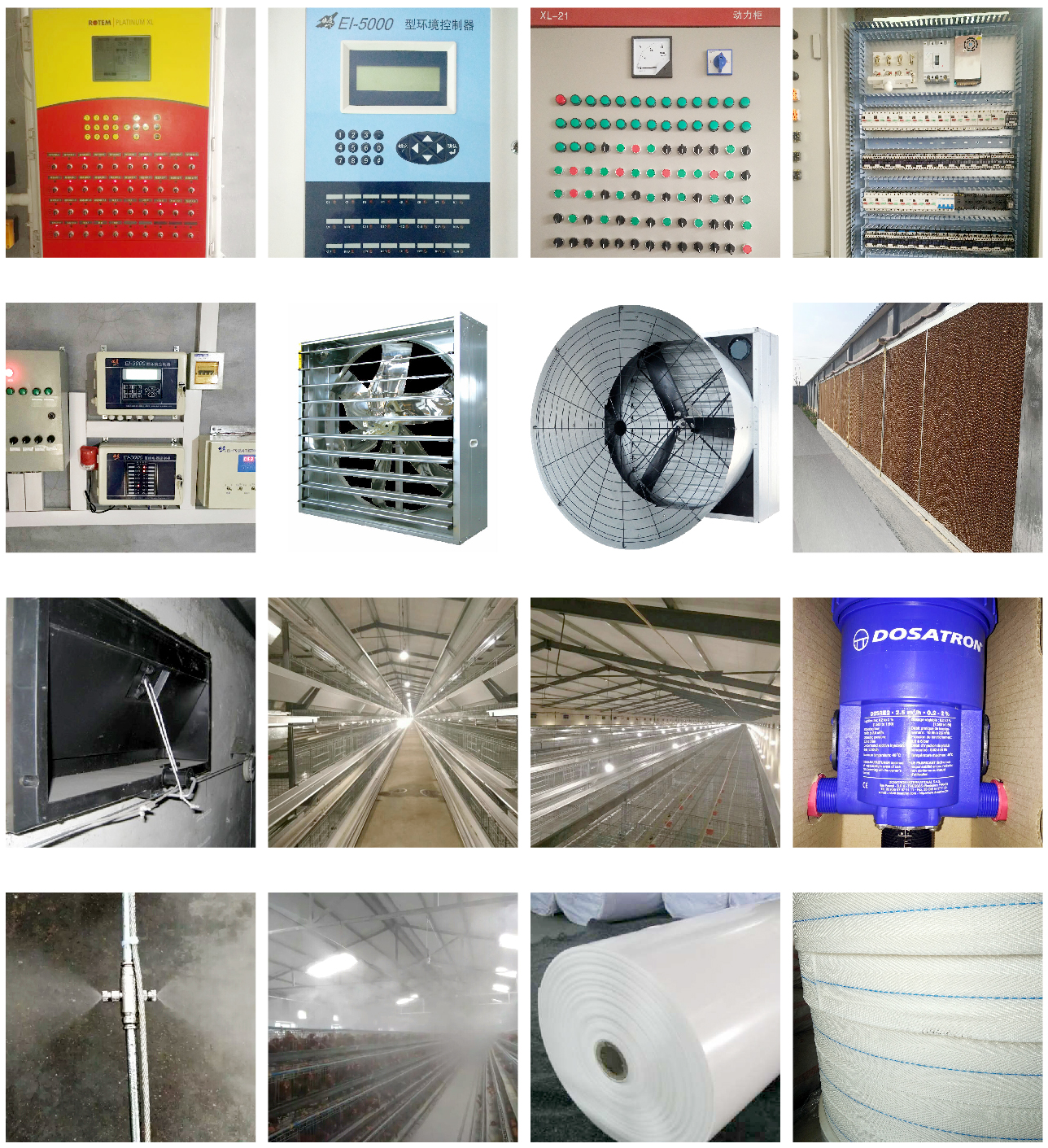
Complete Set of Equipment for Organic Fermentation Treatment of Manure


 Catalogue
Catalogue































 واتس اب
واتس اب هاتف
هاتف